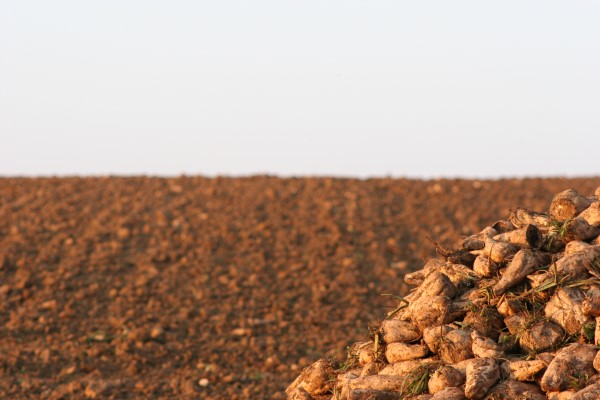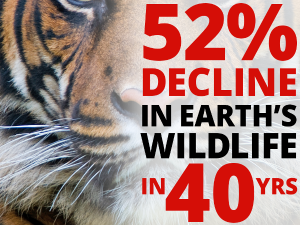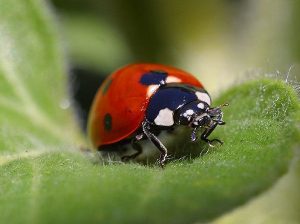With neonicotinoids back in the news this month, Nick Mann of Habitat Aid shares his views on the growing threat they pose in combination with climate change.
As a topic for a blog, neonicotinoids just keep on giving. I started writing about them over a decade ago and the debate about them – like the chemicals themselves – continues to be as toxic. They’re in the news again, as DEFRA has licenced their “emergency use” as a seed coating for sugar beet.
This is – to say the least – contentious. I thought they were dead and buried here in 2018, when clothianidin, imidacloprid and thiamethoxam were banned by the EU, with the UK’s support.
The coverage of the most recent chapter of their story here has tended to be pretty lightweight and partisan. I can’t promise I will be objective about them (!), but I thought it might be helpful to try to flesh out the current problem, particularly as it illustrates some much bigger issues.
Why were they banned?
Neonicotinoids seemed wonderful when they were introduced in the 1990s. As seed coatings they could be a silver bullet, targeting a particular pest. Oil Seed Rape (OSR) growers struggled against Cabbage Stem Flea Beetle infestations. A single bespoke systemic treatment of their crop seemed like a great option. Here was something which was effective and environmentally friendly. It was only harmful to its target pest, and also broke down quickly and harmlessly in the wider environment.
Only it wasn’t and it didn’t.
It turned out that inadequate risk assessment had missed some critical issues. They were difficult to prove in the field, but researchers including Dave Goulson began to. There were surprisingly high concentrations of neonic residue in honeybee and bumblebee colonies close to treated flowering crops – even if they had not been exposed to the chemicals directly. The workers in affected colonies lived less long and were less effective at foraging. Queens produced fewer eggs. Colonies failed. Solitary bee numbers were also seemingly affected. Other pollinators nectaring on treated crops also seemed to be struggling.

Source: Habitat Aid
Then neonics started turning up in unexpected places – they weren’t just disappearing on contact with the soil but were mobile in the environment. Only around 5% of the chemical stayed in the plant, and the rest starting showing up in the soil long after application, and in neighbouring ditches, margins and hedge plants. Neonic use in flea treatments meant they started appearing in Highland burns. It became obvious that all sorts of animals – invertebrates, pondlife, birds – were getting exposure to these chemicals.
We’re still not sure what the full implications of this are – it’s very difficult to test in the field.
It seemed – still seems – incredible that these chemicals had been licenced for use, seemingly without adequate understanding of their impact.
More problems
Farmers were however – understandably – unhappy when they were banned. With nothing to treat their plants they initially saw painful losses in Oil Seed Rape, for example. As a flowering crop (beloved of honeybees in particular), it was particularly important to stop neonicotinoid use on it though. The only response available was to douse the plants repeatedly in pyrethroid based insecticides, to which the beetles became more and more resistant (and not exactly wildlife friendly either). Only recently are new strains of plants, companion planting, and other management changes being used to replace them.
Sugar beet producers have recently reported a significant problem with another pest, aphids. It’s not so much the peach-potato aphids themselves, but rather “virus yellows” – a combination of diseases carried by them. And there’s a neonicotinoid which can be applied via a seed coating which will do for them – Thiamethoxam. This is the active ingredient in Syngenta’s Cruiser SB seed treatment. Hurrah! It will also do for any natural predators of aphids and any one of a number of other animals, of course.
Mooted other solutions are similar to those used for OSR, but will take time to work out, so you can see the logic for a short term “emergency” lifting of the ban, despite the government’s earlier promises.
It’s not simple
The common denominator between these two problems is… climate change. Flea beetles thrive in warm autumns. Peach-potato aphid populations explode after warm winters.
Neither of these pests are going to disappear – they’re only going to get worse. This begs the question, should we continue trying to grow these crops? How important is sugar beet to us? I suppose it depends on how effective other measure are. In the meantime, should we use neonics on them?
Although sugar beet is a non flowering crop, wildflowers in beet field margins might be affected by their treatment. DEFRA’s advice is to spray them off with weedkiller. The government also requires farmers don’t grow a flowering crop for a period afterwards – 22 months, or 32 months for OSR. Is this really going to happen? What about hedgerow plants?
We still don’t know how dangerous neonics are
The government’s own advisory committee admit that chemical levels in standing water in treated beet fields will exceed safety limits, although they also say there’s:
An acceptable risk to aquatic life, soil-dwelling and non-target organisms, birds and mammals consuming treated seedlings and groundwater.
An acceptable risk? The problem with this assessment is:
…based on a sowing rate that was less than that typically used in commercial situations and so underestimated any potential risks.
Oops. Furthermore:
published literature, which was not taken account of in assessing the risks to bees (but has informed the most recent ECP advice on this issue), indicates that many neonicotinoid chemicals, including thiamethoxam, are mobile in the environment and can pose potentially significant risks to a range of wildlife that includes, but is not restricted to, pollinators. These studies further showed that effects had been found outside treated areas and accumulated via food webs. It was not possible to identify how the key risk associated with the use of this product could be further mitigated.
So we’re acknowledging the risks might be significant and saying we’re not sure how bad the consequences of using this chemical might be… but we’re going to use it anyway.
Failed promises
Michael Gove was crystal clear on neonics in 2017 as environment minister:
I have set out our vision for a Green Brexit in which environmental standards are not only maintained but enhanced.
I’ve always been clear I will be led by the science on this matter. The weight of evidence now shows the risks neonicotinoids pose to our environment, particularly to the bees and other pollinators which play such a key part in our £100bn food industry, is greater than previously understood. I believe this justifies further restrictions on their use. We cannot afford to put our pollinator populations at risk.
Even as a non scientist the decision to roll back this pledge seems wrong. It’s definitely not following the precautionary principle. A cynic might think it just represents the triumph of corporate lobbying over scientific evidence and political promises. I couldn’t possibly comment!
The answer?
Many environmentally aware farmers are caught in the middle of this mess. They are facing significant financial losses on sugar beet crops, and the only way out seems to be the application of a banned chemical, which will kill a range of wildlife as well.
They’re damned by most of us for using it, but that condemnation can often seem shrill and simplistic, particularly when channelled through social media.
So:
1. We should all talk, and try to understand the different facets of the problem.
2. The government must deliver its promises of action on biodiversity loss and climate change. Biodiversity loss trumps every other consideration in this instance. We simply can’t go backwards on this.
3. We must change to more sustainable farming systems.
This is a classic practical illustration of the problems caused by current practices and climate change, against the background of biodiversity loss. There will be many more to come. Like flea beetles, we will find alternative methods available for control of peach-potato aphid, if we decide that it’s still worth trying to grow sugar beet here. These alternatives will only emerge quickly as a consequence of financial expedience.
In the meantime, farmers should either be compensated for losses or encouraged to switch crops. Not encouraged to use neonicotinoids.
Find the original post here on the Habitat Aid blog. Main image: sugar beets (resized) by bby_Zuckerrueben via Flickr.
 About the author
About the author
Based in Somerset, Nick Mann started Habitat Aid in 2008 to promote and sell British native trees, hedging, aquatic plants, wildflower seed and heritage fruit trees sourced from a community of small specialist UK nurseries and growers. They also offer groundwork, planting and seeding as well as ecological services through their network of partners.








3 Comments
Excellent well balanced article that describes the situation accurately without sentimentality and not drifting off the point unlike so many that just mixed up this and Brexit bashing.
When will people realise that this government is not concerned about farmers but the loss of shares in the Pharmaceutical companies they are on the boards of this is about greed all of the reversals or should I say lies this government has told about anything to do with climate change are about keepin thier pockets full there is no way now we are out of the EU that our climate or out natural world will be protected so no this is nothing to do with the farmers if they were still getting thier full shares they would have not agreed to do this’
There are several reasons why sugar beet yields were low in 2020. It is not proven that the low yield was entirely, or even largely, due to virus yellows. Many crops round here go to feed anaerobic digesters, not to make sugar. Sugar from cane has a lower carbon footprint. Last but not least, lifting sugar beet (in Winter) causes lasting damage to soil structure.